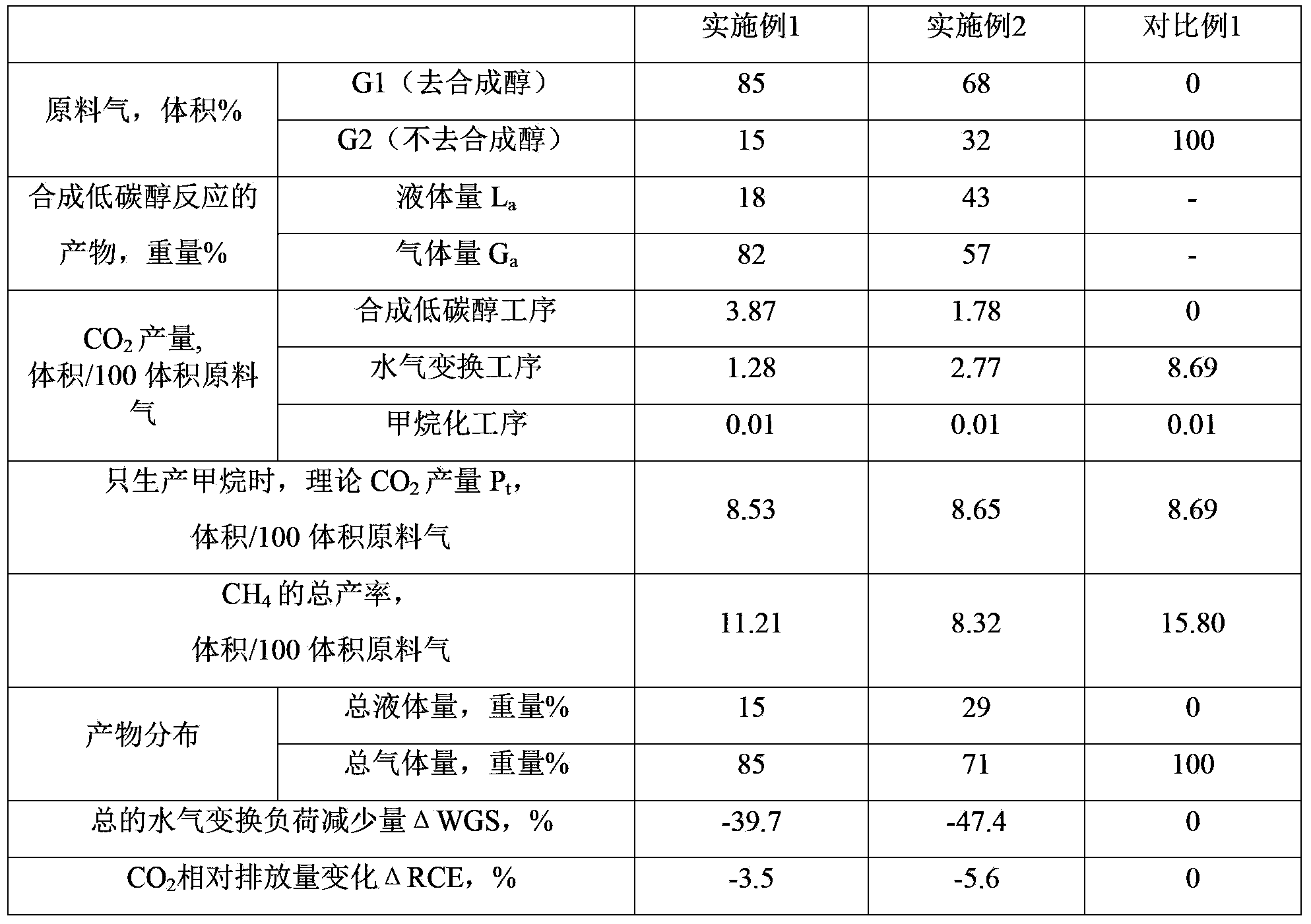Method for producing methane and co-producing low carbon alcohol from carbonaceous material
A low-carbon alcohol and carbon-based technology, applied in chemical instruments and methods, hydrocarbon production from carbon oxides, preparation of organic compounds, etc., can solve problems such as low catalyst efficiency, reduce carbon use efficiency, increase energy consumption, etc., and achieve The effect of low utilization rate of equipment, saving energy consumption and improving utilization rate
- Summary
- Abstract
- Description
- Claims
- Application Information
AI Technical Summary
Problems solved by technology
Method used
Image
Examples
Embodiment 1
[0050] This example is used to illustrate the method for producing methane and co-producing low-carbon alcohols from carbonaceous materials provided by the present invention.
[0051] Lignite fragments with a particle size of 5-50 mm (see Table 1 for chemical composition) are gasified into crude synthesis gas with oxygen / water vapor as a gasification agent, and the obtained crude synthesis gas is sequentially cooled, detarred, crude desulfurized, After the fine desulfurization process, the net syngas (see Table 2 for the composition) is obtained, in which (CO+H 2 ) content is 63% by volume, H 2 / CO molar ratio is 1.59;
[0052] The net synthesis gas is divided into two stocks, G1 and G2. Among them, G1 is sent to the reactor for synthesizing low-carbon alcohols after heat exchange and heating, and is combined with the catalyst for synthesizing low-carbon alcohols (composition: 40% by weight CuO-37% by weight co 2 o 3 -21wt%MnO-2wt%K 2 O) Contact reaction to obtain the con...
Embodiment 2
[0056] The preparation and composition of the net synthesis gas was the same as in Example 1. The entirety of this net synthesis gas is divided into two streams G1 and G2. Wherein, G1 is sent in the synthesis low-carbon alcohol reactor after heat exchange and temperature rise, and the catalyst of synthesis low-carbon alcohol (composition: 50% by weight ZnO-47% by weight Cr 2 o 3 -3% by weight K 2 O) Bed contact reaction. Among them, the inlet temperature of the synthesis reactor is 350°C, the outlet temperature is 391°C, the pressure is 13.52MPa, and the gas space velocity is 4500h -1 . The reacted product is cooled to 40°C by indirect heat exchange and divided into gas stream G a and liquid stream L a Two parts (see Table 3 for weight ratio), gas stream G a Medium (H 2 +CO) content of 55% by volume, H 2 / CO molar ratio is 2.01, liquid flow L a The proportion of medium and low carbon mixed alcohols is 92% by weight;
[0057] G2 is sent to the water-gas shift reactor...
PUM
 Login to View More
Login to View More Abstract
Description
Claims
Application Information
 Login to View More
Login to View More - R&D
- Intellectual Property
- Life Sciences
- Materials
- Tech Scout
- Unparalleled Data Quality
- Higher Quality Content
- 60% Fewer Hallucinations
Browse by: Latest US Patents, China's latest patents, Technical Efficacy Thesaurus, Application Domain, Technology Topic, Popular Technical Reports.
© 2025 PatSnap. All rights reserved.Legal|Privacy policy|Modern Slavery Act Transparency Statement|Sitemap|About US| Contact US: help@patsnap.com



